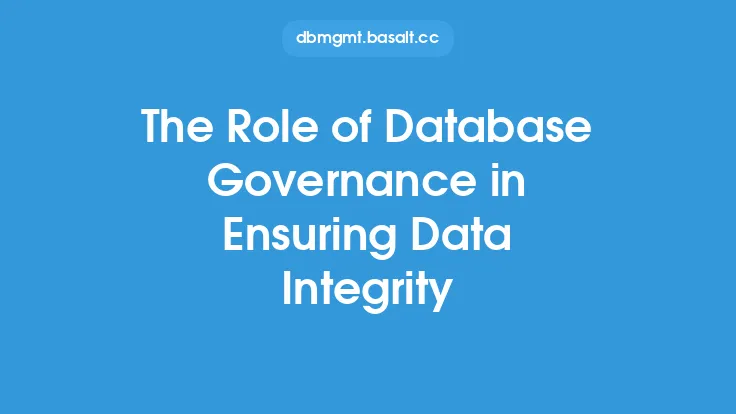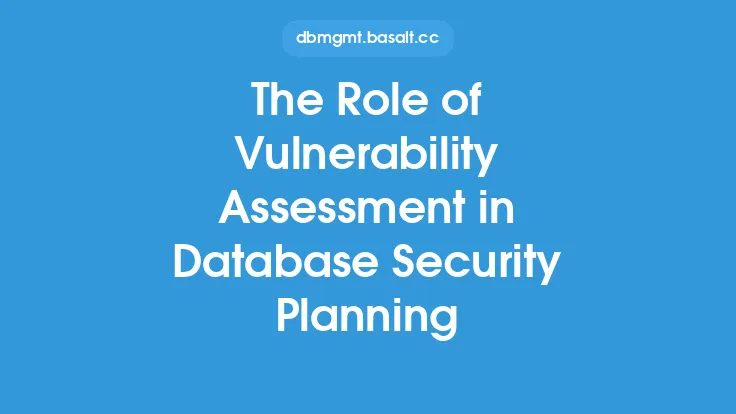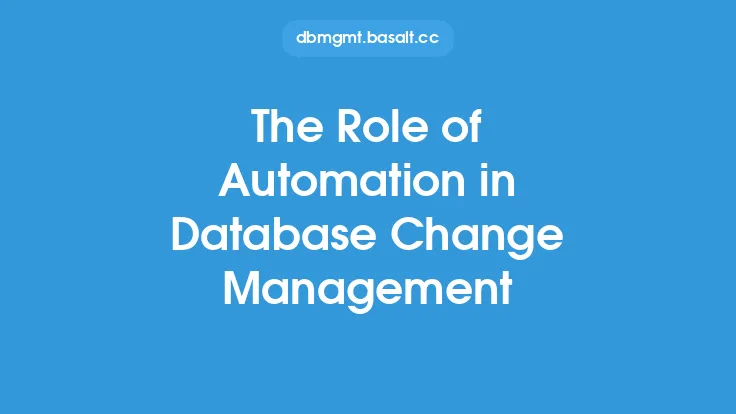Database administration is a complex and multifaceted field that requires a deep understanding of various concepts, techniques, and tools. One of the most critical aspects of database administration is the use of SQL standards, which play a vital role in ensuring the consistency, portability, and reliability of databases. SQL, or Structured Query Language, is a standard language for managing relational databases, and its standards are essential for database administrators to ensure that their databases are designed, implemented, and maintained correctly.
Introduction to SQL Standards
SQL standards are a set of rules and guidelines that define the syntax, semantics, and behavior of SQL languages. These standards are developed and maintained by various organizations, such as the American National Standards Institute (ANSI) and the International Organization for Standardization (ISO). The primary goal of SQL standards is to provide a common framework for database administrators to design, implement, and maintain databases that are consistent, portable, and reliable. SQL standards cover various aspects of database administration, including data types, data manipulation, query language, and database security.
Benefits of SQL Standards
The use of SQL standards offers several benefits to database administrators. One of the most significant advantages is that SQL standards ensure consistency across different databases and platforms. By following SQL standards, database administrators can ensure that their databases are designed and implemented in a consistent manner, which makes it easier to maintain, upgrade, and migrate them. SQL standards also enable database administrators to write portable code that can be executed on different databases and platforms without modification. This portability is essential in today's heterogeneous database environments, where databases from different vendors and platforms need to coexist and interact with each other.
SQL Standardization Process
The SQL standardization process involves several stages, including development, review, and approval. The process typically starts with the identification of a need for a new standard or the revision of an existing one. A committee of experts from various organizations, including database vendors, users, and researchers, is formed to develop the standard. The committee reviews and discusses the proposed standard, and once it is finalized, it is submitted to a higher authority, such as ANSI or ISO, for approval. The approved standard is then published and made available to the public.
Key Components of SQL Standards
SQL standards consist of several key components, including syntax, semantics, and conformance. The syntax component defines the rules for writing SQL statements, including the structure and organization of statements, clauses, and expressions. The semantics component defines the meaning and behavior of SQL statements, including the data types, operators, and functions. The conformance component defines the requirements for compliance with the standard, including the testing and certification procedures.
SQL Standard Versions
There have been several versions of SQL standards, each with its own set of features and improvements. The first version of the SQL standard, known as SQL-86, was published in 1986. Since then, several versions have been published, including SQL-89, SQL-92, SQL:1999, SQL:2003, SQL:2008, and SQL:2011. Each version has introduced new features, such as support for object-oriented databases, XML data types, and window functions. The latest version of the SQL standard, SQL:2011, includes features such as support for temporal databases, merge statements, and enhanced security features.
Impact of SQL Standards on Database Administration
SQL standards have a significant impact on database administration, as they provide a common framework for designing, implementing, and maintaining databases. By following SQL standards, database administrators can ensure that their databases are consistent, portable, and reliable. SQL standards also enable database administrators to write efficient and effective code, which can improve the performance and scalability of databases. Additionally, SQL standards provide a basis for testing and certification, which can help ensure that databases are compliant with industry standards and regulations.
Challenges and Limitations of SQL Standards
Despite the benefits of SQL standards, there are several challenges and limitations associated with their use. One of the main challenges is that different database vendors and platforms may interpret and implement SQL standards differently, which can lead to inconsistencies and incompatibilities. Additionally, SQL standards may not keep pace with the rapid evolution of database technology, which can lead to a lack of support for new features and functionalities. Furthermore, the standardization process can be slow and cumbersome, which can delay the adoption of new standards and features.
Best Practices for Implementing SQL Standards
To get the most out of SQL standards, database administrators should follow best practices for implementing them. One of the most important best practices is to use standard SQL syntax and semantics, rather than proprietary extensions or dialects. Database administrators should also test and certify their databases to ensure compliance with industry standards and regulations. Additionally, database administrators should stay up-to-date with the latest versions of SQL standards and features, and participate in the standardization process to ensure that their needs and requirements are represented.
Conclusion
In conclusion, SQL standards play a vital role in database administration, as they provide a common framework for designing, implementing, and maintaining databases. By following SQL standards, database administrators can ensure that their databases are consistent, portable, and reliable. While there are challenges and limitations associated with the use of SQL standards, best practices such as using standard SQL syntax and semantics, testing and certification, and staying up-to-date with the latest versions and features can help overcome them. As database technology continues to evolve, the importance of SQL standards will only continue to grow, and database administrators must be aware of their role in ensuring the consistency, portability, and reliability of databases.





